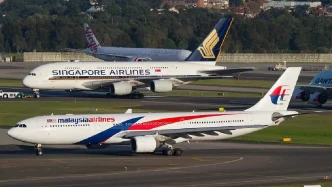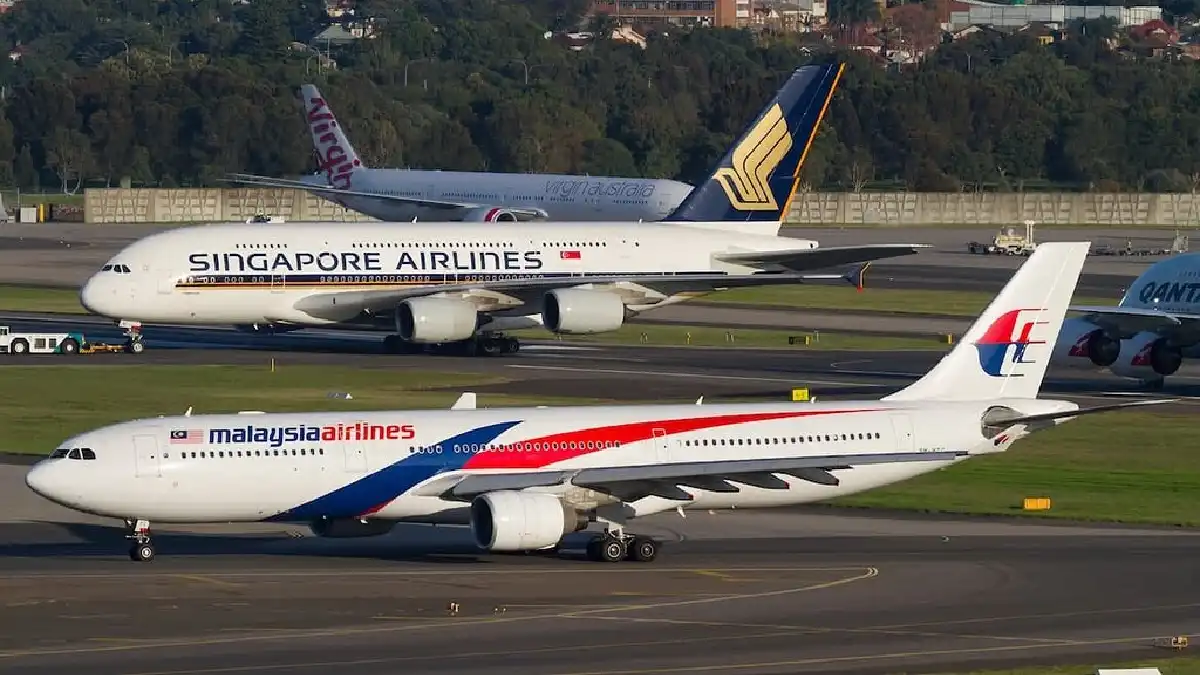On July 7, 2025, the Competition and Consumer Commission of Singapore (CCCS) granted conditional approval to a proposed cooperation between Singapore Airlines (SIA) and Malaysia Airlines, marking a significant step in their efforts to enhance connectivity and boost tourism between the two nations. This updated joint venture, originally agreed upon in October 2019, comes after the airlines addressed key competition concerns raised by the watchdog, paving the way for deeper collaboration on scheduling, pricing, sales, marketing, and expanded codesharing on routes linking Singapore, Malaysia, and markets as far as Europe.
A Revised Agreement Amid Market Shifts
The roots of this partnership trace back to a conditional approval by the CCCS in May 2022, granted under the unique market conditions of the Covid-19 pandemic. At that time, air travel was severely disrupted, and the regulator required the airlines to resubmit their proposal for review once the industry recovered. Responding to this, SIA and Malaysia Airlines updated their application in March 2023, with a further revision in November 2023 to exclude their low-cost subsidiaries—SIA’s Scoot and Malaysia Airlines’ Firefly—from the arrangement, focusing solely on their mainline operations.
The core of the CCCS’s scrutiny centered on the potential for reduced competition, particularly on the heavily trafficked Singapore-Kuala Lumpur route, one of the busiest short-haul corridors in Southeast Asia. The watchdog initially found that coordination on flight prices and capacities could restrict market competition, potentially leading to higher fares or reduced options for travelers. To mitigate these concerns, the airlines made several commitments, including maintaining their weekly seat capacity at pre-cooperation levels, proposing capacity increases tied to performance targets, and providing operational data on their low-cost carriers for the Singapore-Kuala Lumpur route. Additionally, they agreed to appoint an independent auditor to ensure compliance with these terms.
Following a consultation period with industry stakeholders from February 11 to March 4, 2025, during which no significant objections were raised, the CCCS deemed the airlines’ commitments sufficient. The regulator also considered recent market developments, notably the impending closure of Jetstar Asia, a low-cost carrier owned by Australia’s Qantas, which announced it would cease operations on July 31, 2025, as part of a strategic restructure. This exit is expected to reduce competitive pressure on the Singapore-Kuala Lumpur route, making the proposed safeguards by SIA and Malaysia Airlines more critical.
Balancing Competition and Consumer Benefits
The CCCS emphasized that the cooperation could yield significant benefits for consumers and the broader economy. According to the airlines, their partnership is designed to enhance the air travel experience between Singapore and Malaysia by offering an improved product, increasing service options, and potentially delivering more competitive fares. For passengers, this could mean seamless connectivity, with codesharing allowing travelers to book flights across both carriers’ networks under a single itinerary, whether traveling between the two cities or connecting to international destinations like Europe.
Alvin Koh, chief executive of the CCCS, highlighted the delicate balance between fostering competition and enabling collaboration in a post-Covid-19 aviation landscape. “As Singapore becomes increasingly integrated with the global economy in a post-Covid-19 world, competition in Singapore’s aviation industry has intensified, with recent entries and exits in the market,” he said on July 7, 2025. He added that the commitments offered by SIA and Malaysia Airlines provide flexibility to adapt to market developments while ensuring additional flights on the Singapore-Kuala Lumpur route as demand grows. “Nevertheless, the joint venture can lead to airlines coming together to offer better connectivity and options for consumers,” Koh noted.
An SIA spokesperson echoed this optimism, stating on the same day, “The enhanced win-win partnership aims to provide customers with better value, additional options and seamless flight connectivity, while boosting tourism in both Malaysia and Singapore.” This sentiment underscores the potential for the collaboration to not only benefit travelers but also stimulate economic activity in the tourism sectors of both countries, which have historically been key drivers of regional growth.
Navigating a Competitive Aviation Landscape
The aviation industry in Southeast Asia has undergone significant transformation in recent years, with the pandemic accelerating shifts in market dynamics. Singapore, a global hub for air travel, has seen intensified competition as new players enter and others, like Jetstar Asia, exit the market. The closure of Jetstar Asia, while reducing immediate competition on certain routes, also highlights the volatility of the sector and the challenges faced by low-cost carriers in sustaining operations amid fluctuating demand and rising operational costs.
For SIA and Malaysia Airlines, this joint venture represents a strategic move to strengthen their positions in a crowded market. The Singapore-Kuala Lumpur route, often referred to as a “shuttle” due to its high frequency of flights, is a critical corridor for business and leisure travelers alike. By coordinating schedules and pricing, the airlines aim to optimize their offerings, potentially reducing inefficiencies such as overlapping flight times or underfilled aircraft. However, the CCCS’s insistence on capacity commitments reflects a broader concern that such coordination could inadvertently limit consumer choice if not carefully monitored.
Beyond the immediate route, the partnership’s focus on expanded codesharing to markets like Europe signals an ambition to compete more effectively with global alliances and Middle Eastern carriers, which have long dominated long-haul traffic through hubs like Dubai and Doha. For passengers in Singapore and Malaysia, this could translate to more direct options and smoother connections when traveling to international destinations, a key consideration as global travel demand continues to rebound.
Regulatory Hurdles and Future Oversight
While the CCCS’s conditional approval marks a milestone, the agreement is not yet finalized. The partnership still requires regulatory clearance from the Malaysian Aviation Commission, which will assess the proposal under its own competition and aviation policies. This step is crucial, as Malaysia’s regulatory framework may impose additional conditions or require further adjustments to the terms agreed upon with the CCCS. Until this approval is secured, the full scope and timeline of the cooperation remain uncertain.
Moreover, the CCCS has signaled its intent to maintain close oversight of the aviation sector. Alvin Koh stressed that the regulator would continue to monitor developments to ensure that competition yields positive outcomes for consumers. This ongoing scrutiny suggests that SIA and Malaysia Airlines will need to adhere strictly to their commitments, with the independent auditor playing a pivotal role in verifying compliance. Any deviation could prompt a reevaluation of the approval, potentially jeopardizing the partnership’s benefits.
Economic Implications for Singapore and Malaysia
The economic ramifications of this cooperation extend beyond the aviation industry. Tourism, a vital sector for both Singapore and Malaysia, stands to gain from enhanced connectivity. Singapore, often seen as a gateway to Southeast Asia, attracts millions of visitors annually, many of whom use the city-state as a stopover en route to other destinations. Similarly, Malaysia’s diverse attractions, from the bustling streets of Kuala Lumpur to the beaches of Penang, draw significant international traffic. By aligning their services, SIA and Malaysia Airlines could facilitate greater tourist flows, supporting hotels, restaurants, and other businesses reliant on visitor spending.
At the same time, the partnership raises questions about the long-term competitive landscape in regional aviation. While the exclusion of Scoot and Firefly from the agreement addresses some concerns about market dominance, it also limits the scope of potential benefits for budget travelers, who may not see the same level of coordination or fare reductions in the low-cost segment. As other carriers adjust their strategies in response to Jetstar Asia’s exit and this new joint venture, the balance of power in Southeast Asia’s skies could shift further.
Looking Ahead
As SIA and Malaysia Airlines await final regulatory approval from Malaysia, the aviation industry watches closely to see how this partnership will unfold. If successful, it could serve as a model for other regional carriers seeking to navigate the challenges of a post-pandemic world through strategic collaboration. Yet, the CCCS’s rigorous conditions and ongoing monitoring underscore the importance of maintaining a competitive market, ensuring that consumer interests remain at the forefront of such agreements.
For now, travelers between Singapore and Kuala Lumpur can look forward to the promise of enhanced services and connectivity. Whether these benefits materialize—and at what cost to competition—remains a question for the months ahead as both airlines work to implement their vision of a seamless travel experience across borders.
















